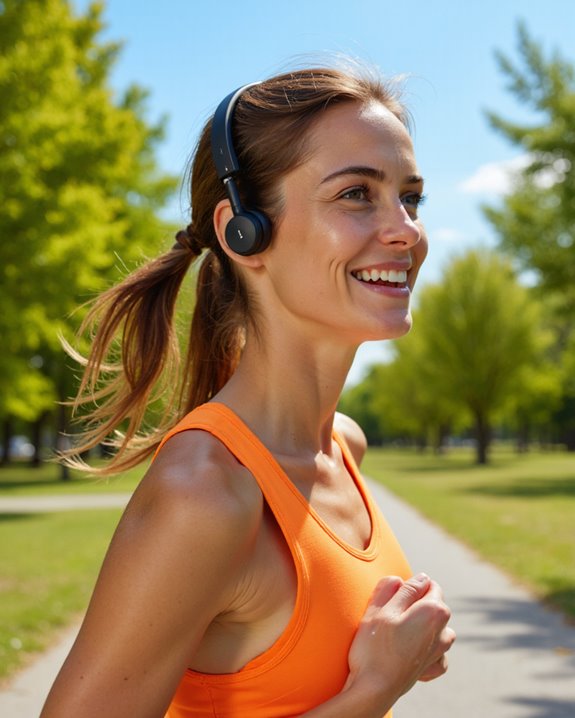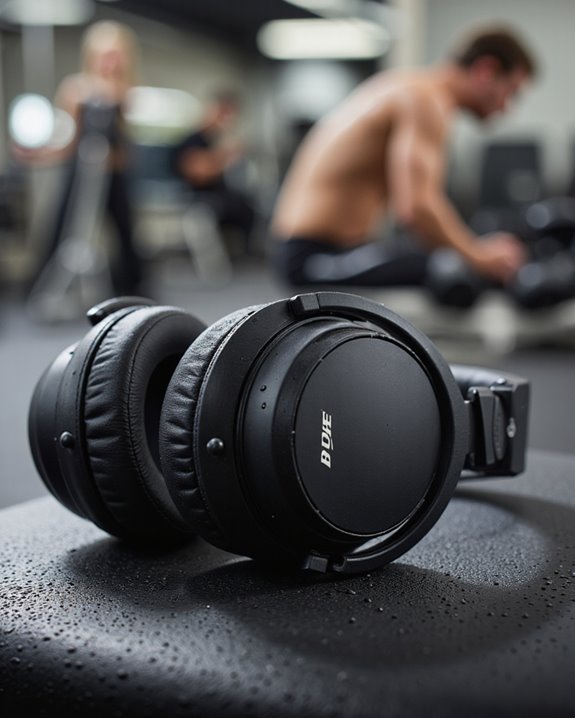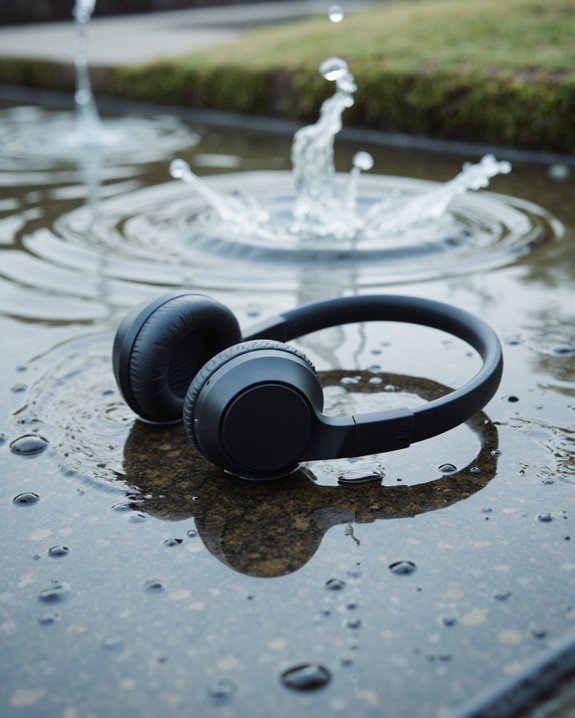As an Amazon Associate, we earn from qualifying purchases. Some links may be affiliate links at no extra cost to you. Although our opinions are based on curated research, we haven't used these products. Articles generated with AI.
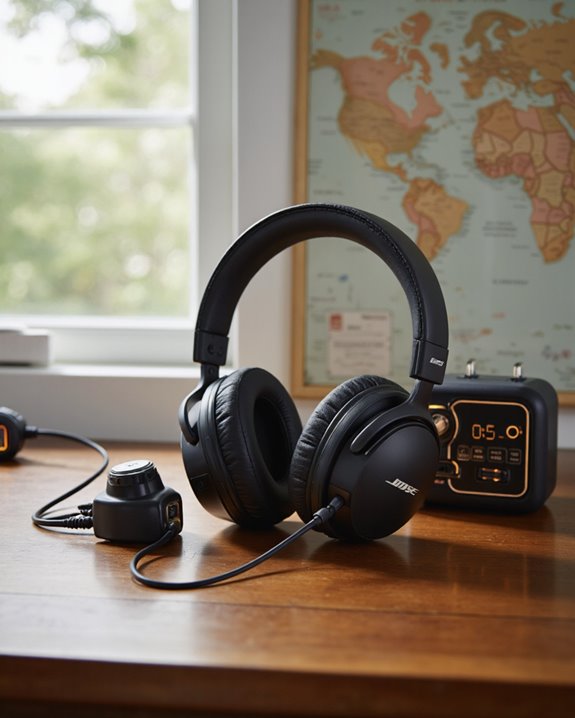
Are Bose Headphones Dual Voltage? Everything You Need to Know
Most Bose headphones—including QuietComfort and recent USB-C models—are dual voltage, supporting 100-240V inputs, so we can charge them safely abroad without a voltage converter. Just check the charger for labels like “Input: 100-240V,” a clear sign it’s dual voltage; older models using AA batteries don’t require voltage checks. Typically, we’ll only need a plug adapter to match outlet shapes overseas. If you’re wondering how to confirm compatibility or maximize safety, there’s more to contemplate ahead.
Key Takeaways
- Most Bose headphones, especially the QuietComfort series, are dual voltage and support 100-240V input for international use.
- Dual voltage capability allows safe charging worldwide with just a plug adapter, not a voltage converter.
- You can confirm dual voltage by checking your charger label for “Input: 100-240V.”
- Newer Bose models charge via USB-C, which is compatible with international voltage standards.
- Models using AA batteries avoid voltage concerns entirely and require no voltage checks when traveling.
Understanding Dual Voltage and Why It Matters
When we talk about dual voltage, we’re referring to the ability of an electronic device—such as certain Bose headphones—to operate seamlessly on both 110V and 220V electrical systems. This feature is especially significant for those of us who travel internationally, as voltage standards differ between regions. Understanding dual voltage guarantees our devices remain safe and functional abroad. For example, plugging a 110V-only device into a 220V outlet without proper adaptation can result in permanent damage. Dual voltage devices typically display clear labels like “Input: 100-240V,” indicating their compatibility. For travel, this means we often need only a plug adapter—instead of a heavy voltage converter—when using dual voltage equipment. This practical design choice streamlines our journeys and protects our electronics.
Power Specifications of Popular Bose Headphone Models
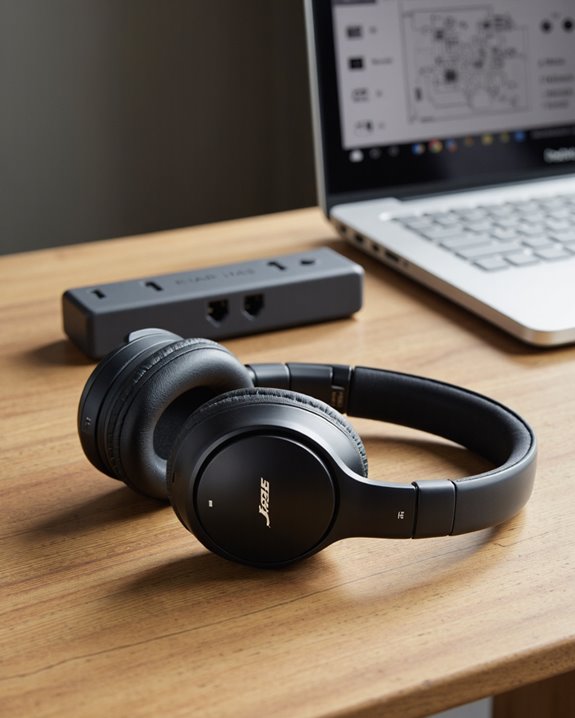
Understanding how specific Bose headphone models handle power requirements helps us avoid mishaps and make informed travel plans. When we review the power specifications of popular Bose headphones, we see a consistent emphasis on dual voltage compatibility. For instance, the Bose QuietComfort series—such as the QC35 and QuietComfort Ultra—feature chargers that support both 110V and 220V inputs, ideal for global use with the correct prong adapters. The QC3 runs on a built-in rechargeable battery, and its charger typically indicates dual voltage support. In contrast, classic models like the QC15 use AA batteries, eliminating voltage concerns altogether. Most newer Bose QuietComfort headphones charge via USB-C, following international standards. Always check the charger’s label for voltage ratings to guarantee safe and efficient use abroad.
How to Check If Your Bose Headphones Are Dual Voltage
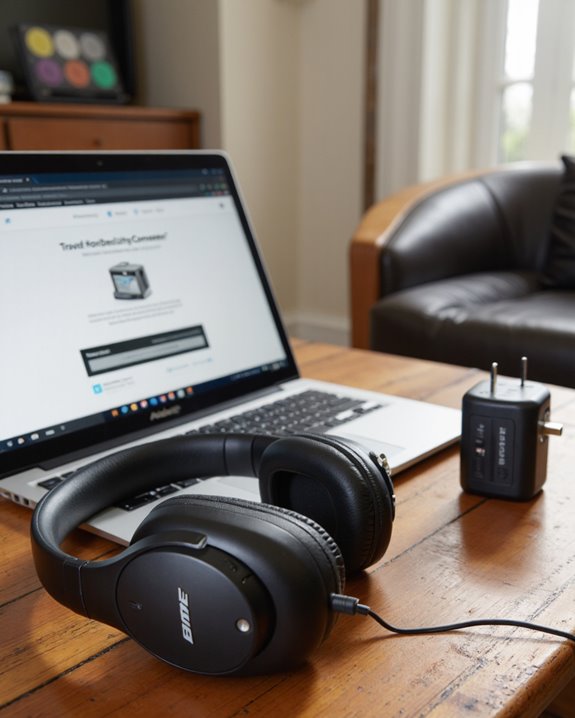
Curious about whether your Bose headphones can handle international voltage differences? Let’s walk through the process of identifying dual voltage capability. First, inspect your charger; the specifications label usually lists the input voltage range. If it states “Input: 100-240V,” your headphones are dual voltage—meaning the charger can operate safely on both 110V and 220V mains power. Many newer Bose models, like the QuietComfort series, support this range. If you can’t locate the information on the charger, check your headphones’ user manual or visit Bose’s official website for precise voltage specifications. For models using AA batteries, such as the QC15, dual voltage isn’t a concern, since these run on standard battery power rather than a wall charger.
Using Bose Headphones Internationally: Adapters vs. Converters
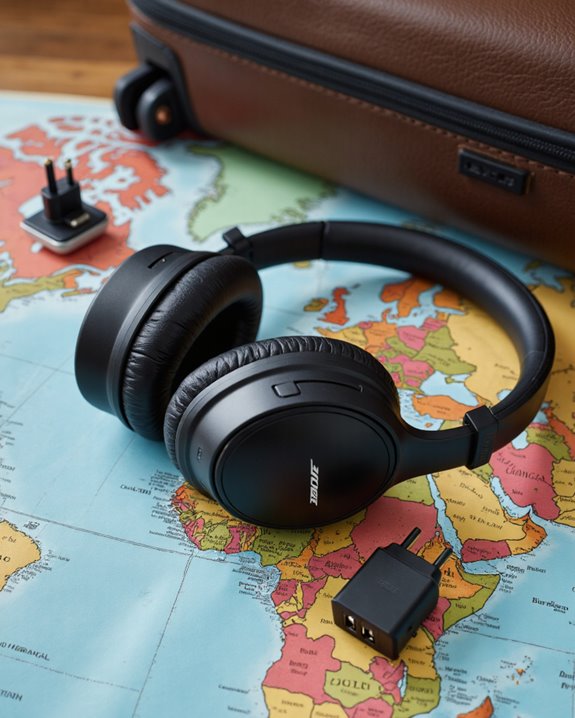
Although international travel can complicate charging our electronic devices, using Bose headphones abroad is generally straightforward thanks to their dual voltage capability. Most Bose QuietComfort models, for example, are designed to accept both 110V and 220V power inputs, eliminating the need for bulky voltage converters. Instead, we simply need plug adapters that match local outlet shapes, since the charging circuitry already handles voltage variations. This makes adapters the more practical and compact choice for travel across 200+ countries. Before heading out, however, it’s smart to verify the dual voltage rating—look for “Input: 100-240V” on the charger label. Some older models, like the QC15, use AA batteries rather than built-in rechargeable batteries, so charging requirements may differ depending on the specific model.
Charging Bose Headphones Safely When Traveling Abroad
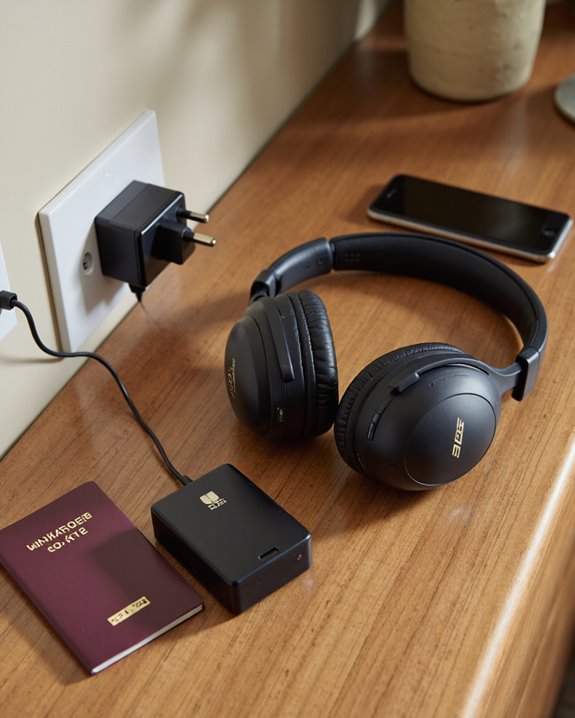
When preparing to charge our Bose headphones overseas, it’s important to prioritize both device safety and charging efficiency. Most Bose headphones, like the QuietComfort series, support dual voltage (110V–220V), enabling us to charge them in different countries without a voltage converter. Before plugging in, we should always check the charger’s label for voltage compatibility and confirm our model—since older models like the QC15 use AA batteries, while newer ones have built-in rechargeable batteries. For safely charging, a compatible USB-C cable is essential, as it’s the standard for most recent Bose models. Typically, a simple prong adapter suffices for foreign outlets, eliminating the need for bulky converters. This systematic approach guarantees we’re charging Bose headphones safely and efficiently wherever we travel.
Tips for Protecting Your Electronics on International Trips
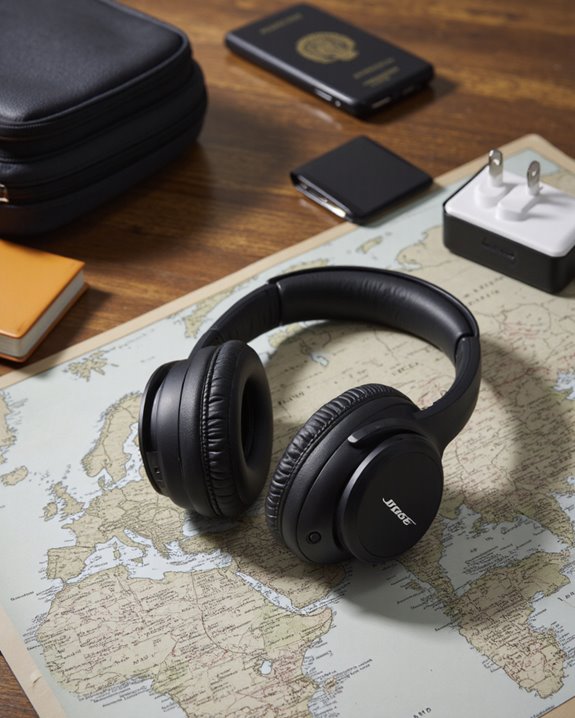
Even seasoned travelers can run into trouble if they overlook the unique electrical standards and potential hazards present in foreign destinations. To avoid unexpected issues and additional cost, we should always check our devices’ voltage specifications—especially since many North American electronics are made for 110V only. Using a dual voltage travel adapter, ideally with multiple USB ports, guarantees we can charge several items at once without compromising battery life. It’s wise to bring a portable surge protector, as voltage spikes are common in some countries and can damage sensitive electronics like Bose headphones. For reliable connectivity, a compact Wi-Fi repeater can improve weak hotel signals. Let’s also make certain all chargers and adapters are kept organized in a dedicated travel pouch, reducing the risk of loss or damage.
Frequently Asked Questions
Are Bose Products Dual Voltage?
We often find Bose voltage compatibility impressive—travel here, charge there. While many Bose product specifications list dual voltage support, let’s always check the Bose headphone features and documentation, since some models may differ and require confirmation.
Can I Charge My Bose Headphones in Europe?
We can definitely charge our Bose headphones in Europe. Most models offer flexible charging options, so we usually just need travel accessories like a plug adapter—not voltage converters. Always check your model’s specs for peace of mind.
Can I Use My Bose Headphones on a Plane International?
Like a cocoon in the sky, we can enjoy Bose headphones for airplane usage on international flights. Their noise cancellation helps us relax and, with handy travel tips, wireless features make our journeys more comfortable and enjoyable.
Is Bose Soundtouch Dual Voltage?
When we look at Bose SoundTouch features, we see some models offer dual voltage, but not all. For Bose SoundTouch compatibility abroad, let’s always check the label or Bose SoundTouch reviews before plugging in.

